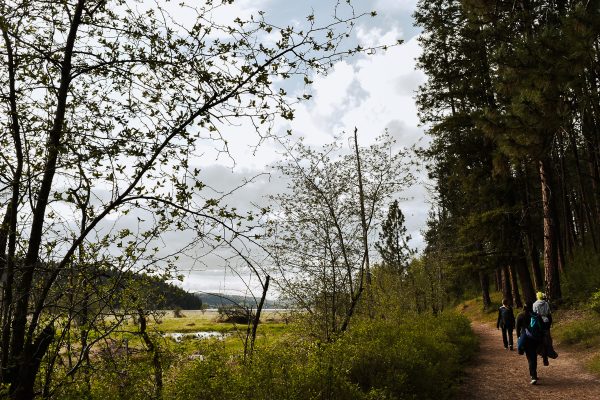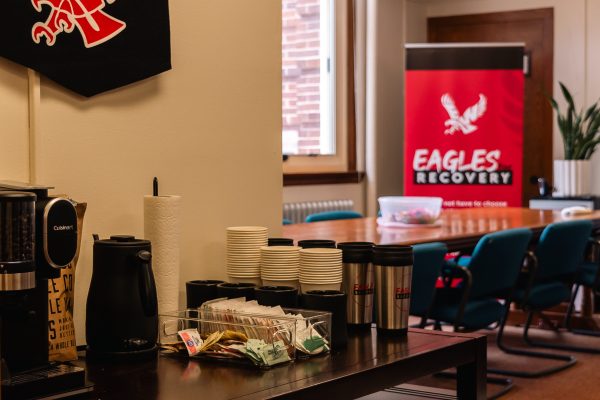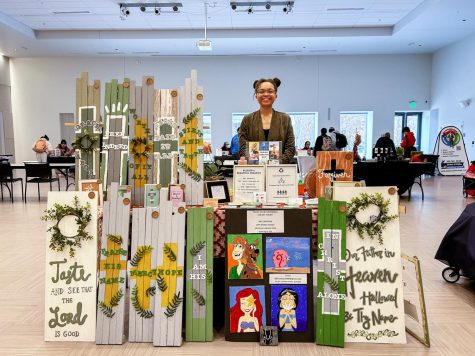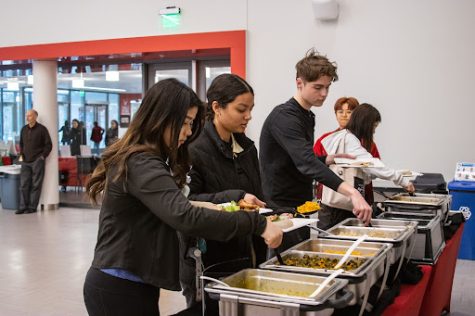Students seek solutions in stains
Club analyzes bloody mess
April 29, 2013

Editor’s note: Splatter is not a term that is actually used in bloodstain analysis. In the last two paragraphs it is not clearly stated that blood reacts in a predicable manner based on the laws of physics.
After being handed the cup containing blood and saliva, Alison Pierce soaks the liquid with the pipette, and then sprays it onto the paper taped to the wall.
As the liquid oozes down the paper, Pierce explains to students, who are dressed in large yellow lab coats, that blood stains containing saliva will be connected by the mucus strands. This was one of the things students learned at the blood splatter analysis workshop, hosted by a member of the Inland Empire Forensic Science Society, April 17.
Pierce had previously taken a class about blood splatter analysis to go with her Crime Response Team training.
“I like to incorporate stuff I have done, and I thought it would be enjoyable to the group,” Pierce said. “We kind of like to have one lab that is messy each year.”
Students learned ways to identify characteristics of bloodstains, how to look for patterns and how bloodstains can be used for scene reconstruction.
“One or two stains do not a pattern make; you need more,” Pierce said.
Courtney Shaffer, who is currently taking Chemistry 140, attended the workshop to learn a little bit about the history of forensics as well as learn different aspects of blood splatters, such as when a smear is classified as a wipe or a swipe.
“A wipe meant that something was already there and it was disturbed,” Shaffer said. “A swipe was [originally] a clean surface and blood was applied.”
After learning the history of the origins of bloodstain pattern analysis, the group went to examine a wall covered in dry stains. They also noted the impressions of hand prints and points of origin.
“In a real scene you can never know exactly what happened, but you can often determine the sequence and origin of events through blood stain pattern analysis,” Pierce said.
For the hands-on portion of the workshop, Pierce used animal blood she got from a butcher.
The group used devices like a pipette and a mousetrap to splatter blood on the white paper. They also used their fingers and knees to create their own stains.
“We do these experiments to recreate and, hopefully, understand what happened,” Pierce said.
Kara Tomlinson is a member of the society who enjoyed the experience of the workshop.
“It was different seeing the different blood splatter show up compared to how you make them,” Tomlinson said.
According to Pierce, blood reacts in a manner based on the laws of physics.
“Because of this, it is often possible to determine the action that caused a bloodstain pattern,” Pierce said.
FBI’s Bloodstain Pattern Analysis Recommended Terminology
Area of Origin – The three-dimensional location from which splatter originated.
Bloodstain pattern — A grouping or distribution of bloodstains that indicates through regular or repetitive form, order, or arrangement the manner in which the pattern was deposited.
Drip Stain — A bloodstain resulting from a falling drop that formed due to gravity.
Impact Pattern — A bloodstain pattern resulting from an object striking liquid blood.
Spatter Stain — A bloodstain resulting from a blood drop dispersed through the air due to an external force applied to a source of liquid blood.
Swipe Pattern — A bloodstain pattern resulting from the transfer of blood from a blood-bearing surface onto another surface, with characteristics that indicate relative motion between the two surfaces.
Wipe Pattern — An altered bloodstain pattern resulting from an object moving through a preexisting wet bloodstain.
For more FBI Bloodstain Pattern Analysis terminology, visit http://1.usa.gov/XV1LOO.






![Simmons said the biggest reasons for her success this year were “God, hard work, and trusting [her] coach and what she has planned.”](https://theeasterner.org/wp-content/uploads/2024/05/image1-1-1200x800.jpg)









